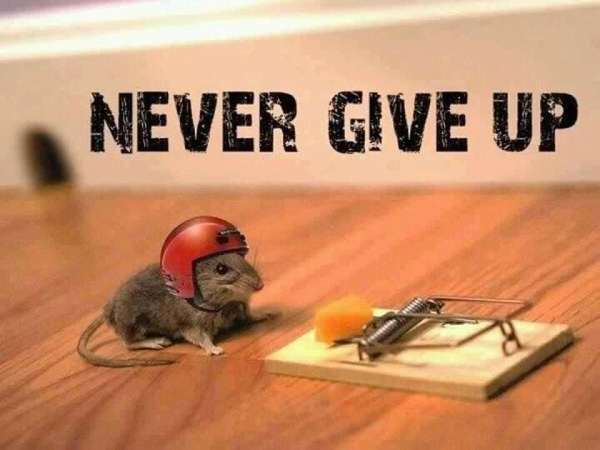
This whole postmodern slide into nihilism leaves some folks searching for the meaning of life. Maybe things are easier for those stuck in Kegan’s Stage 3 mode, who get meaning from God and tradition. They are here on earth in order to carry on their culture and fulfill the commands of God. And maybe postmodernism has a nihilistic side that strips all meaning from existence. But I am growing more and more comfortable with a mechanistic view of meaning.
If you sit down with the neuroanthropologist Terrence Deacon, you will hear his theory about the origins of life. It goes something like this. Some molecules bind together and form chemical reactions and structures that persist. There is nothing really remarkable about this idea. Molecules are bumping around and forming chains and capturing other molecules and behaving just as chemistry would dictate. And they come together to form these dynamic processes that look like self-maintaining systems.
And pretty soon you have little living things. Strange bundles of molecules that are chemically compelled to use the energy in the environment to maintain their structure. It might seem strange to think of the goal of a single celled organism. But if it can be said to have a goal, persisting in the environment isn’t a bad guess. You might subscribe to Dawkin’s selfish gene idea and insist that it’s the replicator, the DNA, that has the goal of persisting, and I won’t argue with you. But basically, if you don’t persist a self-sustaining structure, then nothing can stick to you and increase your complexity.
So there you have it. Survive and reproduce. In that order. First and foremost survive. If possible, reproduce. The meaning of life. Have a nice day. But no one is ever satisfied with that damn answer. It’s too easy these days for some of us First World crybabies to survive. Or at least the survival part is easy if you are rich enough. The reproduction part is complicated, as we know, with more educated women choosing to have fewer babies. But I don’t really worry about that since persistence is the key. Some parental investment strategies involve having lots of offspring and giving them little parental care, and others involve having fewer offspring and giving them greater parental care. One offspring with greater survival skills will persist, where a multitude of offspring with fewer survival skills may fail.
I don’t have kids, but I feel that I contribute to life persisting by paying my taxes, giving to charity, and working in renewable energy, which will help all of life on earth persist. In other words, it’s not necessary to have kids to contribute to the persistence of life.
Things that don’t take the necessary actions to persist aren’t around for us to even observe. So it’s a pretty solid baseline for a good preference to have. But is this really MEANINGFUL? Sure. If you are a fairly primitive creature, just surviving and reproducing satisfies your goals. As you move up the ladder of complexity, you might care about your family and their persistence becomes the meaning of your life. Even bacteria that form biofilms sacrifice themselves for their families. Move up a bit further and the persistence of your tribe becomes meaningful. This expanding circle of empathy represents more advanced beings finding meaning in the persistence of a broader and broader range of organisms. Every animal is a DNA replicator just like us, after all. We even share 50% of our genome with potatoes.
Hedonists say that pleasure is the meaning of life. Some would want to offload persisting to a godlike AI and plug into a virtual reality, nonstop orgasm. Gah! Good luck building that infernal contraption, first of all. Secondly, I predict that you can’t find meaning there, because if something’s meaning could get hacked, it would have stopped existing long ago. But sure, go be a hedonist if you insist on deluding yourself about the nature of living things, which is to persist and to replicate.
Even my beloved Seligman’s PERMA model makes sense when viewed through the harsh lens of persistence. Positive emotions give us something to look forward to. Engagement generally occurs during the exercise of skill, and skills generally further the cause of survival, even unlikely ones like video games, which have been shown to improve some types of cognition. Relationships matter to us social animals because we stick together in order to survive and of course we need others to reproduce (for now). Meaning in Seligman parlance is being involved in something greater than ourselves. On one hand, this could just be an extension of our social nature. If we derive meaning from building cultural institutions like churches or academia, these things provide frameworks for survival. On the other hand, if we see ourselves as part of a greater whole of all DNA based replicators, that’s a pretty awesome project to be part of. And as for Accomplishment, I am quite satisfied with a Hansonian explanation of this. We need status to maintain social standing and we need social standing to survive. And really any account of flourishing or self-actualization that didn’t provide tools for persisting in the environment would be very hard to explain from an evolutionary perspective.
Is that still not good enough? What about art and love, you ask? Well, I just argue that those are super tools for persistence, of course. Still not enough for you? Well, get out and persist into the solar system and then outer space, persist into the light cone. We are just living things. Persisting is what we do and who we are. Get with it.

 50 Cent Piece, by Jean-Michel Basquiat
50 Cent Piece, by Jean-Michel Basquiat